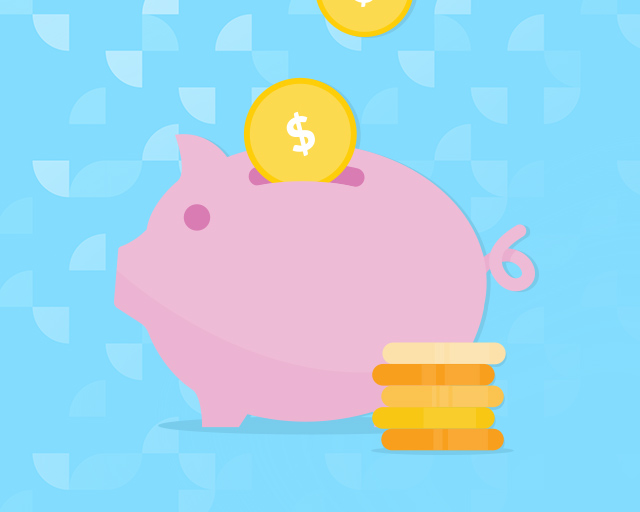

You dream of a better life for you and your family. It’s what you think about when you wake up in the morning and before you go to sleep at night.
Your family deserves it. You deserve it. But what does “better life” really mean?
Is it being able to take a family vacation every year? Is it a more dependable car for your wife, who drives 40 miles round trip to work every day? Is it a house with a yard, with room for your kids to play and for cookouts with friends?
Whatever “better life” means to you, how do you turn your dreams of one into reality for you and your family? We’re glad you asked.
start by setting financial goals
Financial goals might sound big and scary but stick with us for a few minutes.
Let’s go back to those dreams for your family. They aren’t scary, are they?
Well, think of setting financial goals as the first step toward reaching your dreams.1 They don’t sound so scary now, do they? Good.
Start by setting aside some time to work on your financial goals. They’ll take a little work, but it’ll be worth it.
If you have a spouse or partner, work on your goals together. You might learn about dreams and goals you didn’t know they had.
Oh, and it’s important that you write down your goals. Research shows that people who write down goals are much more likely to reach them than if they don’t write them down.2
Fired up and ready to learn more about setting goals? Wonderful. We suggest the SMART goals framework to help you think through and plan each one of your goals.
what are SMART goals?
SMART goals give you an easy-to-follow framework for creating, planning, tracking and achieving your financial goals.1
The letters in SMART stand for (S)pecific, (M)easurable, (A)chievable, (R)elevant, and (T)ime-Bound.1 Think of these as guidelines for your goals.
Keep reading to learn more about each of the SMART guidelines. Later in this article, we’ll share where you can get useful forms to help you get started on your goals.
Specific
A vague goal is harder to reach. When you make a goal more specific, it can feel more real and reachable.
For instance, saving money is a good goal. Having a reason for saving that money makes it more inspiring and easier to remember.
How do you make a goal more specific? Ask yourself what you’re saving for.
It could be a new couch for the family room, a family vacation or a down payment on a house.
Or maybe it’s an emergency fund. Do you have one?
An emergency fund is a savings account you use to put aside money for unexpected expenses like car repairs or medical bills. The Consumer Finance Protection Bureau (CFPB) suggests having an emergency fund as one of your top savings goals.3
We’ll use an emergency fund as our example for the remaining guidelines.
Measurable
This is where you’ll figure out how to know when you’ve met your goal.
Since we’re talking about financial goals, you’ll probably be writing down a dollar amount.
If you’re saving toward a goal, like an emergency fund, it’s as simple as deciding how much you’d like to have in yours. Knowing this amount will give you a target and a way to track your progress.
Your financial goals don’t always have to be about savings though. You could also choose paying down debt as a goal and track your progress as your account balance goes down.
Achievable
It’s important to look at your goal closely and ask these questions.
Does it seem like something you can reach? Do you have the tools and support you need to accomplish it?1,4
Back to our emergency fund example. You might want to have three months of expenses saved, but a smaller goal of $500 might be more doable. Once you accomplish that goal, you’ll be ready to start another one.
Relevant
Here’s where to ask if the goal is something you really want. Why is it important to you and your family? And is it the right time to work toward this goal?1
These might be tough questions to answer, but they’ll help you dig deeper into the reasons why you’re setting this goal.
In the case of an emergency fund, it could be important to you to have money saved for unexpected expenses.
Time-bound
Your goal needs a deadline or target date. Otherwise, you won’t be as motivated to work toward it. Ask yourself, when will I reach this goal and is the time frame reasonable?1
It’s good to have a mix of short- and long-term goals. Short-term goals are usually less than a year. Saving for an emergency fund or a family vacation are good examples of short-term goals.
Long-term goals are longer than a year. These could include a down payment on a car or home, saving for retirement or paying off student loans.
Now for a quick quiz. Don’t worry, it’ll be easy. If you want to save for down payment on a home, what type of goal would that be? It’s a long-term goal. Home down-payments are usually larger amounts, so the target date for your goal will depend on when you want to buy a home and how much you want to have saved.
what’s next?
Now that you know all about SMART financial goals, it’s the perfect time to start working on yours.
The CFPB has created a couple of easy-to use forms to help you with your goals. Here are the links:
Setting SMART goals
https://files.consumerfinance.gov/f/documents/cfpb_your-money-your-goals_SMART-goals_tool_2018-11.pdf
Putting SMART goals into action
https://files.consumerfinance.gov/f/documents/cfpb_your-money-your-goals_goals-action_tool_2018-11.pdf
1 https://files.consumerfinance.gov/f/documents/cfpb_your-money-your-goals_SMART-goals_tool_2018-11.pdf
2 https://files.consumerfinance.gov/f/documents/cfpb_future-self-tool_2021-05.pdf
3 https://www.consumerfinance.gov/about-us/blog/get-money-smart-25-tips-improve-your-financial-well-being/
4 https://files.consumerfinance.gov/f/documents/cfpb_building_block_activities_setting-smart-savings-goal_worksheet.pdf









